A VERY OLD MACHINE
Also in the series
William Rothman, editor, Cavell on Film
J. David Slocum, editor, Rebel Without a Cause
Joe McElhaney, The Death of Classical Cinema
Kirsten Moana Thompson, Apocalyptic Dread
Frances Gateward, editor, Seoul Searching
Michael Atkinson, editor, Exile Cinema
Bert Cardullo, Soundings on Cinema
Paul S. Moore, Now Playing
Robin L. Murray and Joseph K. Heumann, Ecology and Popular Film
William Rothman, editor, Three Documentary Filmmakers
Sean Griffin, editor, Hetero
Jean-Michel Frodon, editor, Cinema and the Shoah
Carolyn Jess-Cooke and Constantine Verevis, editors, Second Takes
Matthew Solomon, editor, Fantastic Voyages of the Cinematic Imagination
R. Barton Palmer and David Boyd, editors, Hitchcock at the Source
William Rothman, Hitchcock: The Murderous Gaze , 2nd ed.
Joanna Hearne, Native Recognition
Marc Raymond, Hollywoods New Yorker
Steven Rybin and Will Scheibel, editors, Lonely Places, Dangerous Ground
Claire Perkins and Constantine Verevis, editors, B Is for Bad Cinema
Dominic Lennard, Bad Seeds and Holy Terrors
Rosie Thomas, Bombay before Bollywood
A VERY OLD MACHINE
The Many Origins of the Cinema in India
SUDHIR MAHADEVAN
Cover image: Bioscope in Surajkund Mela (annual fair) in suburban Delhi, India (Photo: Padmanabha Rao Pulakhandam)
Published by
STATE UNIVERSITY OF NEW YORK PRESS
Albany
2015 State University of New York
All rights reserved
Printed in the United States of America
No part of this book may be used or reproduced in any manner whatsoever without written permission. No part of this book may be stored in a retrieval system or transmitted in any form or by any means including electronic, electrostatic, magnetic tape, mechanical, photocopying, recording, or otherwise without the prior permission in writing of the publisher.
For information, contact
State University of New York Press
www.sunypress.edu
Production, Laurie D. Searl
Marketing, Kate R. Seburyamo
Library of Congress Cataloging-in-Publication Data
Mahadevan, Sudhir, [date]
A very old machine : the many origins of the cinema in India / Sudhir Mahadevan.
pages cm. (SUNY series, Horizons of cinema)
Includes bibliographical references and index.
ISBN 978-1-4384-5829-8 (hardcover : alk. paper)
ISBN 978-1-4384-5830-4 (e-book)
1. Motion picturesIndiaHistory. 2. Motion picture industryIndiaHistory. I. Title.
PN1993.5.I8M326 2015
10 9 8 7 6 5 4 3 2 1
CONTENTS
ILLUSTRATIONS
ACKNOWLEDGMENTS
Speaking of origins, the title of this book was proposed by Murray Pomerance at a DOMITOR conference a few years ago, during a brief ten-minute break between panels. Murray has been more than a friend and Series Editor at SUNY for this project (and with the title of this book, a conceptualizer-in-chief). His guidance has been invaluable in seeing this manuscript through to book form. Thanks go also to James Peltz, co-director of SUNY Press, to Rafael Chaiken, the production and copy editors Laurie Searl and Alan Hewat, the marketing team, including Kate Seburyamo, and everyone at the Press for seeing this manuscript through to publication.
Im grateful to my intellectual and professional homes at the University of Washington in Seattle: the Department of Comparative Literature, Cinema and Media, my current and past chairs in the department, M el Vaughan and Cynthia Steele, my colleagues in the Film Studies Program (Jennifer Bean, Eric Ames, Yomi Braester, Tamara Cooper, Cynthia Steele, James Tweedie), and my colleagues in the South Asia Studies Program in The Jackson School of International Studies. My film studies colleagues saw me through challenging moments by shouldering some of my existing teaching commitments. Particular thanks go to Jennifer Bean, James Tweedie, and to doctoral candidate Kathy Morrow in this regard. Without all of them, and the inspiration of their own scholarly work, this book is unimaginable. Marcia Feinstein-Tobey has been a pillar of administrative and logistical support, and along with Yuko Mera, an additional source of camaraderie that I have valued very much. Paul Morton copyedited early versions and also undertook some of the late research and scanning of images. I owe many of the same debts to the South Asia Program at the UW under the direction of Priti Ramamurthy and Anand Yang. Institutional support came in the form of a Society of Scholars Fellowship at the UWs Simpson Center for the Humanities. Two quarters off as part of the Junior Faculty Development Program at the UW were additionally instrumental for this project. Christian Novetzkes counsel with regard to this book as well as on more practical matters has been far more valuable and profound for me than I may have communicated to him. Michael Shapiro, as Divisional Dean of the Humanities, approved significant funds in the form of subvention for the production of this book. Priti Ramamurthys seemingly inexhaustible source of intellectual and practical guidance has been nothing short of fundamentally enabling.
el Vaughan and Cynthia Steele, my colleagues in the Film Studies Program (Jennifer Bean, Eric Ames, Yomi Braester, Tamara Cooper, Cynthia Steele, James Tweedie), and my colleagues in the South Asia Studies Program in The Jackson School of International Studies. My film studies colleagues saw me through challenging moments by shouldering some of my existing teaching commitments. Particular thanks go to Jennifer Bean, James Tweedie, and to doctoral candidate Kathy Morrow in this regard. Without all of them, and the inspiration of their own scholarly work, this book is unimaginable. Marcia Feinstein-Tobey has been a pillar of administrative and logistical support, and along with Yuko Mera, an additional source of camaraderie that I have valued very much. Paul Morton copyedited early versions and also undertook some of the late research and scanning of images. I owe many of the same debts to the South Asia Program at the UW under the direction of Priti Ramamurthy and Anand Yang. Institutional support came in the form of a Society of Scholars Fellowship at the UWs Simpson Center for the Humanities. Two quarters off as part of the Junior Faculty Development Program at the UW were additionally instrumental for this project. Christian Novetzkes counsel with regard to this book as well as on more practical matters has been far more valuable and profound for me than I may have communicated to him. Michael Shapiro, as Divisional Dean of the Humanities, approved significant funds in the form of subvention for the production of this book. Priti Ramamurthys seemingly inexhaustible source of intellectual and practical guidance has been nothing short of fundamentally enabling.
Over the years, I have relied on the staff of many research institutions and archives in India and elsewhere. I am very grateful to all of them for making this book possible. Amma (my mother Vimala Kumar) served as liaison with the Asiatic Society in acquiring scans after I had left Kolkata, and a considerable portion of chapter 5 would never have come to fruition without her intervention and extraordinary ability to patiently navigate even the most recalcitrant of bureaucracies. Her indefatigable approach to challenges is tough to live up to and easy to respect. Jessica Scarlatta provided urgently needed and timely assistance with images in the last stages of this books production. Amit Malhotra, Prashant Kadam, Padmanabha Rao, Tim Sternberg, David McDougall, and Peeyush Sekhsaria shared their photographic and film work and thoughts on this project.
My intellectual debts are so immense that Im not sure this brief acknowledgment will do justice. Nitin Govil is probably the most instrumental here in nudging me to think about assemblages and media archaeology for an early piece that appeared in Bioscope , and is dear friend and mentor rolled into one. I am also extremely grateful to Ravi Vasudevan for inviting me to share an early portion from this book for publication, as well as for his extensive feedback. The many others who read, commented, and shared ideas include Richard Allen, Eric Ames, Sareeta Amrute, Ulka Anjaria, Anustup Basu, Jennifer Bean, Ira Bhaskar, Kiko Benitez, Yomi Braester, Marshall Brown, Ranita Chatterjee, Corey Creekmur, Manishita Dass, Christof Dupin, Bishnupriya Ghosh, Stephen Hughes (whose work on early cinema in Madras is exemplary for me, and whose gentlest remonstrations on inartful formulations came weighted with insight), Priya Jaikumar, Reese Jenkins, Sonal Khullar, Antonia Lant, Brian Larkin, Anna McCarthy, Neepa Majumdar, Ranjani Mazumdar, Ivone Margulies, Anand Pandian, Christopher Pinney, Aswin Punathambekar, Ashish Rajadhyaksha, Tirthankar Roy, Bhaskar Sarkar, Girish Shambu, Ravi Sundaram, Clare Wilkinson-Weber, Kathy Woodward, Anand Yang, and Pierce Young.



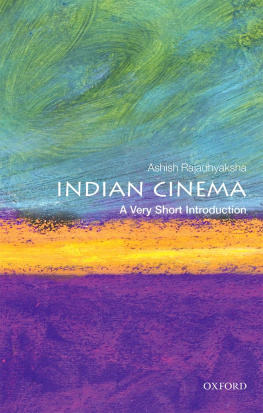
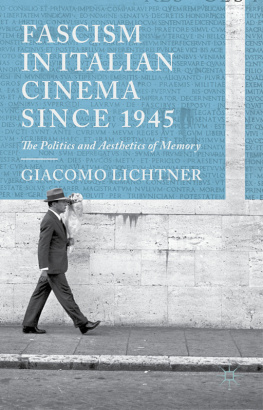
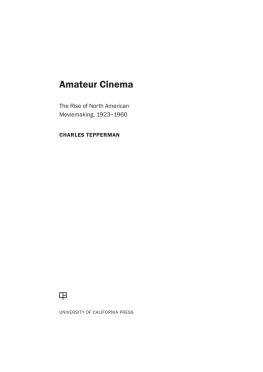
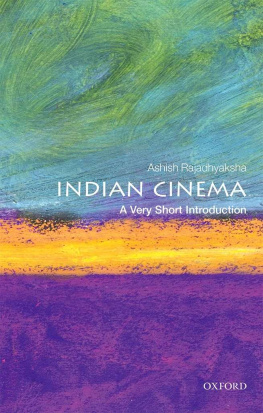
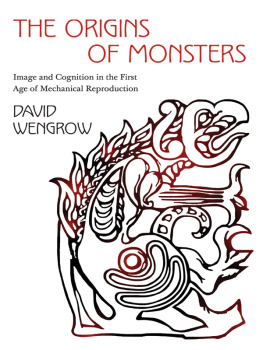
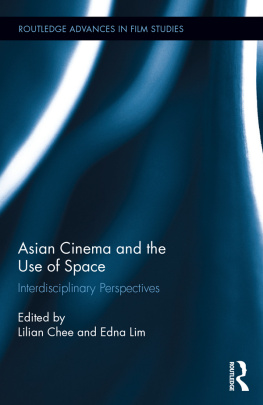
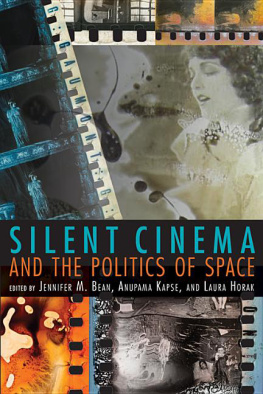




 el Vaughan and Cynthia Steele, my colleagues in the Film Studies Program (Jennifer Bean, Eric Ames, Yomi Braester, Tamara Cooper, Cynthia Steele, James Tweedie), and my colleagues in the South Asia Studies Program in The Jackson School of International Studies. My film studies colleagues saw me through challenging moments by shouldering some of my existing teaching commitments. Particular thanks go to Jennifer Bean, James Tweedie, and to doctoral candidate Kathy Morrow in this regard. Without all of them, and the inspiration of their own scholarly work, this book is unimaginable. Marcia Feinstein-Tobey has been a pillar of administrative and logistical support, and along with Yuko Mera, an additional source of camaraderie that I have valued very much. Paul Morton copyedited early versions and also undertook some of the late research and scanning of images. I owe many of the same debts to the South Asia Program at the UW under the direction of Priti Ramamurthy and Anand Yang. Institutional support came in the form of a Society of Scholars Fellowship at the UWs Simpson Center for the Humanities. Two quarters off as part of the Junior Faculty Development Program at the UW were additionally instrumental for this project. Christian Novetzkes counsel with regard to this book as well as on more practical matters has been far more valuable and profound for me than I may have communicated to him. Michael Shapiro, as Divisional Dean of the Humanities, approved significant funds in the form of subvention for the production of this book. Priti Ramamurthys seemingly inexhaustible source of intellectual and practical guidance has been nothing short of fundamentally enabling.
el Vaughan and Cynthia Steele, my colleagues in the Film Studies Program (Jennifer Bean, Eric Ames, Yomi Braester, Tamara Cooper, Cynthia Steele, James Tweedie), and my colleagues in the South Asia Studies Program in The Jackson School of International Studies. My film studies colleagues saw me through challenging moments by shouldering some of my existing teaching commitments. Particular thanks go to Jennifer Bean, James Tweedie, and to doctoral candidate Kathy Morrow in this regard. Without all of them, and the inspiration of their own scholarly work, this book is unimaginable. Marcia Feinstein-Tobey has been a pillar of administrative and logistical support, and along with Yuko Mera, an additional source of camaraderie that I have valued very much. Paul Morton copyedited early versions and also undertook some of the late research and scanning of images. I owe many of the same debts to the South Asia Program at the UW under the direction of Priti Ramamurthy and Anand Yang. Institutional support came in the form of a Society of Scholars Fellowship at the UWs Simpson Center for the Humanities. Two quarters off as part of the Junior Faculty Development Program at the UW were additionally instrumental for this project. Christian Novetzkes counsel with regard to this book as well as on more practical matters has been far more valuable and profound for me than I may have communicated to him. Michael Shapiro, as Divisional Dean of the Humanities, approved significant funds in the form of subvention for the production of this book. Priti Ramamurthys seemingly inexhaustible source of intellectual and practical guidance has been nothing short of fundamentally enabling.